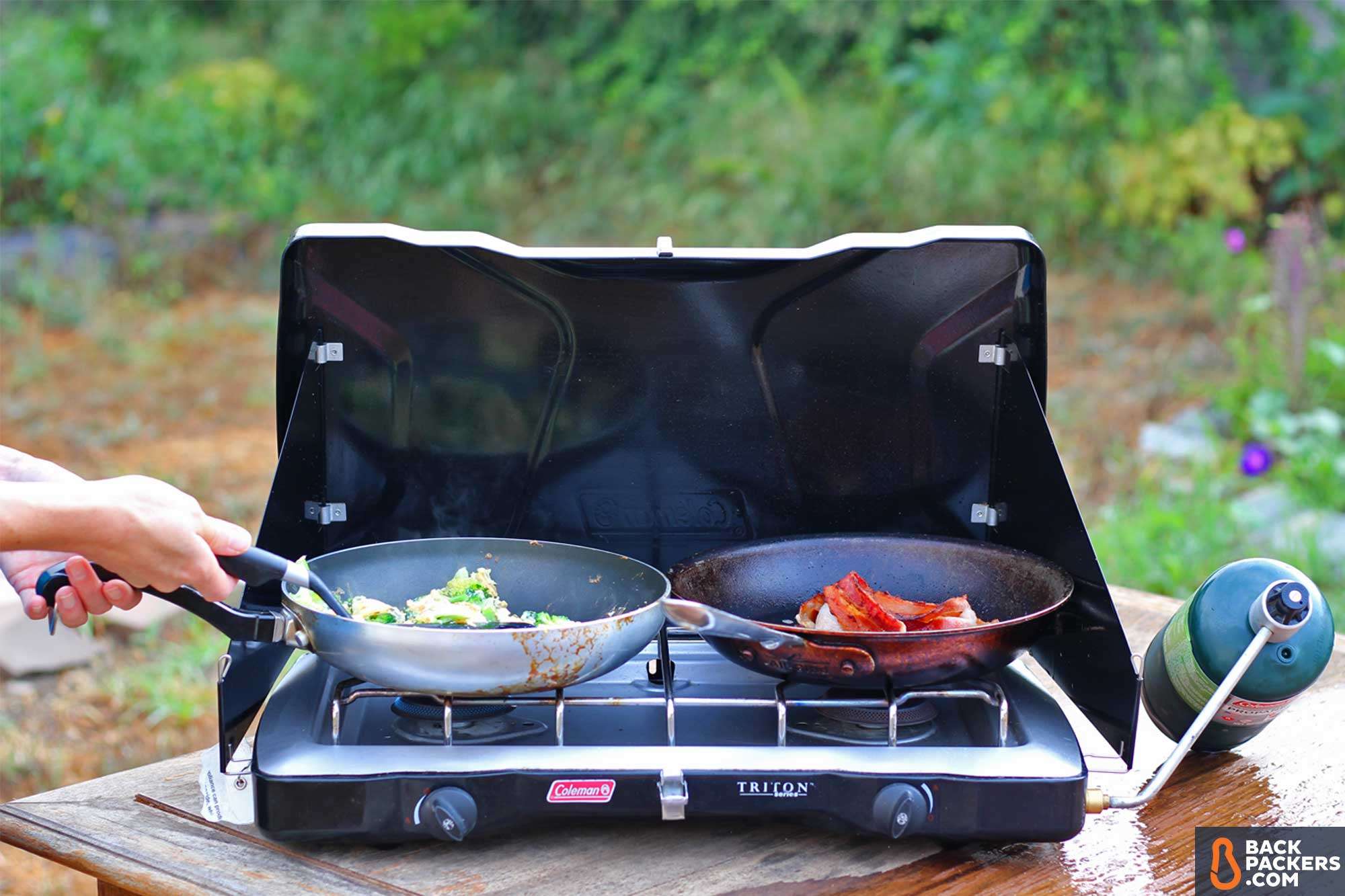Fuel Comparison
When shopping for a compact camping stove for your campervan (or otherwise), there are more than a few suitable options. Comparing butane vs propane stoves has many nuances, such as fuel consumption rate, the temperatures they’re suited for, weight, and cost. All three can function fine in a campervan setting, but let’s break down the science of each fuel.
Propane has a lower boiling point than butane, meaning it continues to change from a liquid to a gas even in very cold environments. This is less relevant in car camping, but if you were backpacking in harsh winter conditions, this may apply. Propane is cheap, readily available in most stores and gas stations, and and can be cross-compatible with small portable heaters, which you may want.
Butane canisters are lighter, but are not suited to work as reliably in extreme temperatures. The stoves that they accompany, however, are very convenient and light, and are often used in kitchens as an additional burner. Butane is unfortunately not as readily available, but it can be bought in packs of 12 for a couple dollars per can.
Hybrid fuels ( commonly referred to as “iso-prop” or iso-propane canisters) combine the benefits of both into one lightweight, high-performing fuel. They are more expensive, yes, but are generally more compact bottles, and will perform under any condition. These are commonly used for backpacking stoves, and as such, the canisters themselves function as the base of the stove.
Two-burner camping stove (Propane)
These have been around for ages (we have Kate’s father’s stove from the ‘70s) and the design hasnt changed much, be it a Coleman Triton or the Classic Coleman. They use the stout green propane cannisters found at almost every camping or hardware store, and are ideal for car-camping, where space isn’t necessarily at a premium. All of the stoves on this list are portable camping stoves to some degree, but this 2-burner is definitely the bulkiest and intended for more car-camping scenarios where you want more cooking possibilities and have more room for storage. Don’t need a two-burner? This Coleman bottle top burner is both stable and compact.
Pro: Sturdy, dependable, and will last most of a lifetime. Two burners, so you can have multiple items cooking at once, and the lid and side panels act as a wind screen – maintaining heat and increasing fuel efficiency. The whole thing is metal, so you can close it up pretty much as soon as you’re finished cooking.
Cons: It’s the largest of all of the options in this list – essentially a metal briefcase. Cleaning this can be a pain, which which why most Boy Scouts learn to line the base with aluminum foil – a tedious task in itself.
Fuel cost: $21 for 2-pack of 14.2oz canisters ($0.64/oz)
Butane Stove Choices
I owned several backpacking stoves and two-burner propane camping stoves before we set out on our van-venture, but I came across this Iwatani stovetop and loved the idea of a true stovetop burner in a relatively small package. I stand by my decision, as having it for the trip was incredibly convenient, there’s no real “set up” or fumbling around looking for lighters, and it fits into a folding plactic carrying case. But there are a few drawbacks you should know; here’s the breakdown:
Pro: Easy to use and more compact than a two-burner camping stove. Produces a high heat all the way down to a light simmer. Extremely stable when using larger pots and pans. The burner and its metal plate simply rests on top of the rest of the heating element, meaning it is easy to clean. The stove itself is affordable, and the butane fuel is moderately available at camping stores, Walmart, etc.
Cons: It’s only one burner, obviously, so you’ll have to plan your meals accordingly (See Here for a good list of cheap one-pan meals). Walmart/Target/etc frequently seemed to be out of stock of butane in California, while always having a healthy supply of propane (below). Lastly, it takes a good 5 – 10 minutes for the burner to cool off before you can place it back into its plastic carrying case without fear of melting the inside.
Fuel cost: $22 for 12-pack of 8-oz canisters ($0.22/oz)
Backpacking stoves (Isopropane mix)
Like the MSR Pocket Rocket or a simple generic version.
Pro: By far the lightest and most compact/space-saving option. Unlike both butane and propane, Iso mixtures will still function well in sub-freezing temperatures, so consider this if you’re spending a lot of time in the snow or at high altitudes. The fuel canisters come in a variety of sizes.
Cons: By the ounce, these are the most costly, and may not be found as easily in your local Walmart or corner store. Just like the butane stovetops, these are still only one burner, and because they are meant to be used for backpacking, they are the smallest, and therefore the most precarious. Use larger pots/pans with caution.
Fuel cost: $5 for 4 oz ($1.25/oz)
Takeaway
If you have the space available and plan to cook meals often, a two-burner propane stove will give you the most flexibility and has fuel thats easy to find. If you like the idea of a single burner stovetop in a nice compact package, consider the butane-fueled Iwatani stove, OR better yet, the GAS-ONE Dual Fuel stovetop, which accepts either butane or propane! Small backpacking stoves with fuel like IsoPro simply aren’t suitable for vanlife cooking, due to their instability and limited fuel availability.






This was really helpful. Not van living, just camping, but this article was exactly what I needed to know. Thanks!